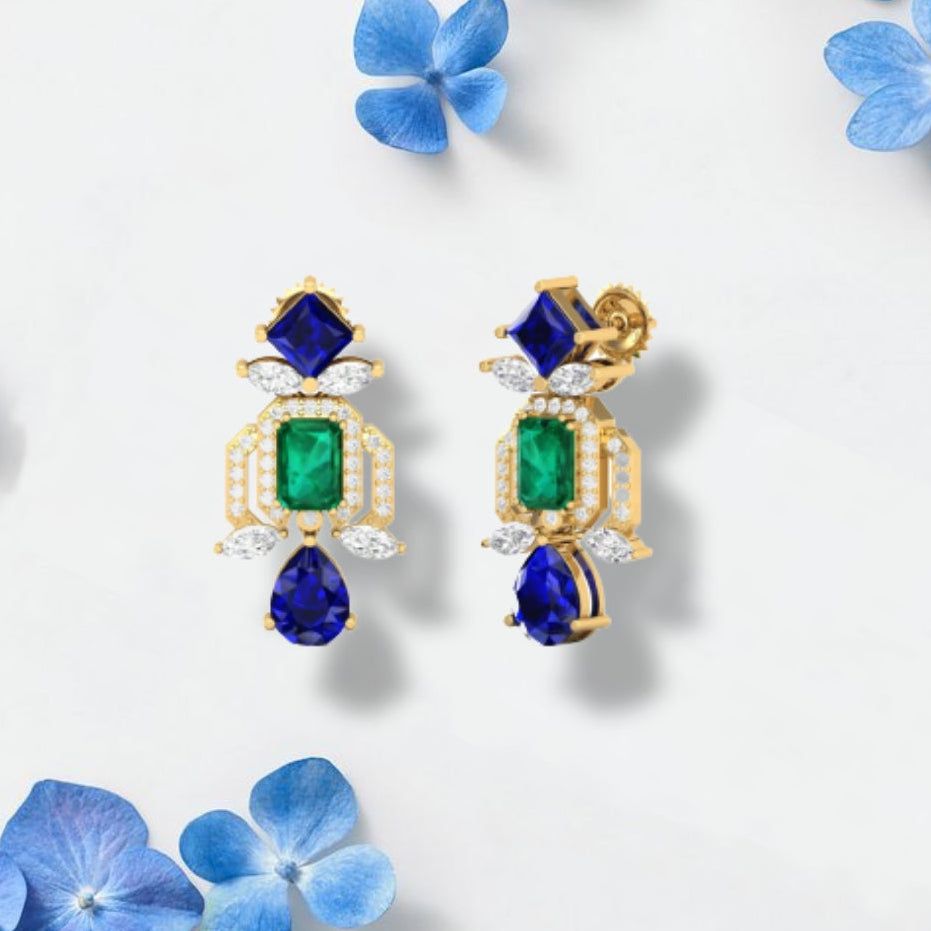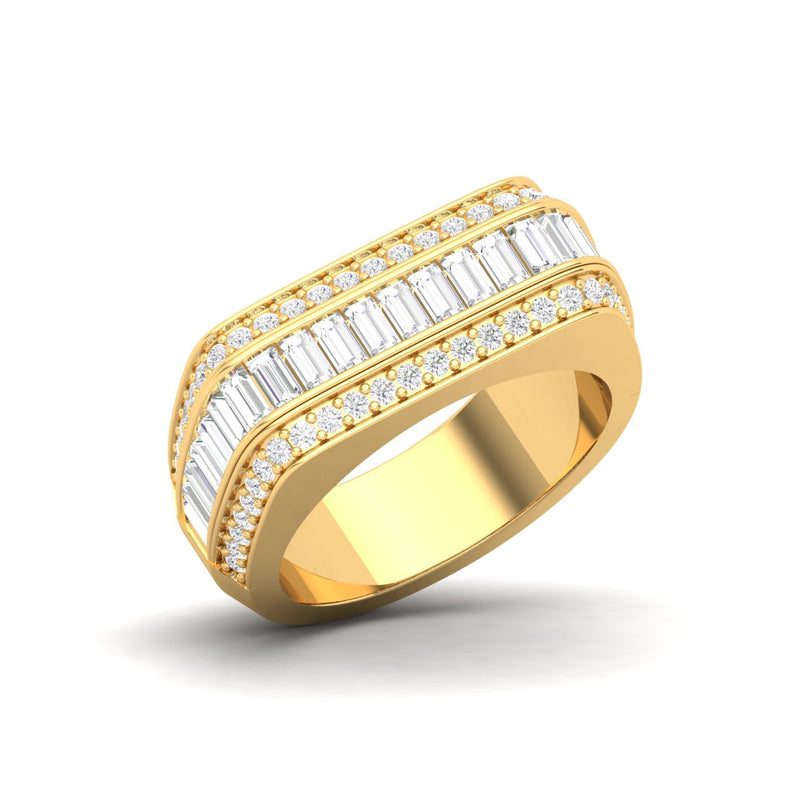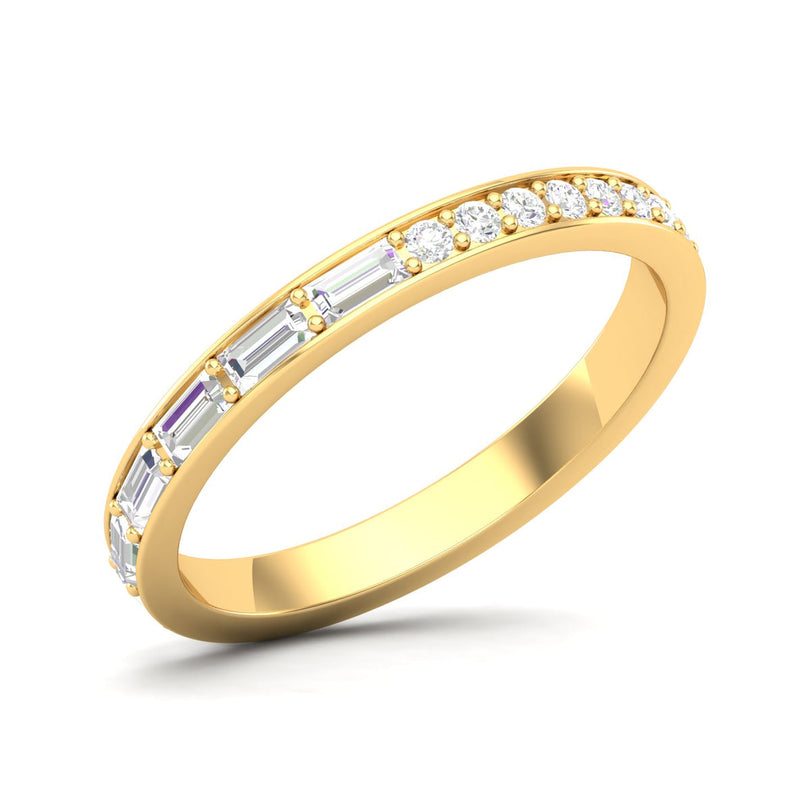In the darkest recesses of an amethyst vision, we find ourselves submerged in a universe where natural strokes of color and mystical shades mingle to produce a work of art that is enthrallingly beautiful. All who dare to stare upon the mesmerizing splendor of amethyst, the highest-quality gem of the quartz family, is enchanted. Amethyst appears like a heavenly guard dressed in a majestic purple robe as dusk extends its gentle arms across the landscape. When its silky petals open, an otherworldly light that appears to transcend time is revealed. This diamond, which sprang from the molten core of the earth, embodies mystery and lends an unearthly charm to each of its facets.
Overview
The magnificent amethyst serves as February's birthstone protector in the magical world of birthstones, where cosmic pairings weave stories of fate. Amethyst, which shimmers with a majestic charm and is eager to bestow its enchantment abilities upon people born in this mystical month, arises from the earth's bottom like a prized gem.
Amethyst jewelry transforms February babies into inspirational lights that exude the stone's alluring charisma. They do it with pride, showing off their birthright with elegance and panache. Amethyst's brilliant attractiveness turns into a palpable reminder of their particular position in the cosmos, whether in the form of stunning necklaces that rest upon their souls or rings that wrap their fingers.
The month of February is the domain of amethyst when destiny takes on beautiful colors. With its majestic purple brightness, this gemstone serves as a pathway for ambitions and goals, sparking the creative fires inside individuals who embrace it as their inheritance. They are inspired to follow their passions courageously because they already possess the gemstone's intrinsic power in their souls.
Amethyst's splendor inspires jewelry designers to construct amazing pieces that capture the spirit of this alluring gem. Amethyst may be found in exquisite works of personal art, from beautifully made earrings that decorate the décolletage to grandiose rings decorating the fingers of nobility. Each item pays respect to the gem's intangible allure and enables the user to take a little bit of its magic with them everywhere they go.

Symbolism
Amethyst is an everlasting symbol of spiritual understanding, defense, and change in the world of gemstones. Its majestic purple tones and ethereal energy beckon us to go into the darkest corners of our beings and appreciate the majesty of the unknowable. Amethyst's fascinating symphony leads us on a voyage of discovering oneself and enlightenment as we ornament ourselves with its alluring presence. May the appeal of amethyst continue to ring in our souls, encouraging us of the limitless opportunities that are within our grasp.
Amethyst is frequently linked to change and personal development. It nudges people to let go of old habits, welcome change and set out on a quest for self-awareness. Amethyst encourages mental clarity and the bravery to overcome obstacles, enabling its wearer to realize their full potential. It functions as a guiding light during the night.
Between the material and spiritual worlds, amethyst acts as a channel for heavenly force. Amethyst was thought by ancient cultures to open pathways of knowledge and illumination by facilitating connection with higher entities. It was viewed as a link between the physical world and the spiritual world, as well as an opportunity to investigate the boundless facets of life.
Properties
Hardness and strength
Amethyst, belonging to the quartz family, boasts an impressive hardness of 7 on the Mohs scale. This scale, ranging from 1 to 10, measures the relative hardness of minerals, with diamonds being the hardest at a perfect 10. Amethyst's hardness places it in a commendable position, ensuring its longevity and resistance to everyday wear and tear.
Treatment
One of the most popular and highly approved treatments for amethyst is thermal therapy. To improve the gemstone's color and get rid of any unwelcome tones, a regulated heating technique is used. The gem's aesthetic attractiveness can be improved by heat treatment, which can result in a more bright and consistent color.
Another process used to enhance or change the color of amethyst is irradiation. The precious stone is subjected to radiation during this procedure, either in the type of gamma rays or electron beams. A variety of colors, including varying degrees of green and yellow, can occur from the irradiation process, which can cause the color centers within the gem to reorganize.
In the context of amethyst, polishing, and coloring processes are less frequent and typically not recommended. Although these processes can increase amethyst's aesthetically pleasing qualities, they are not seen as long-lasting or reliable improvements.
Although processed amethyst is widely available, unavoidable, untreated amethyst can also be found. The color or brilliance of these stones has not been enhanced artificially in any way.
Quality and grading
Color
Purple Amethyst:
Purple amethyst is the most commonly recognized and sought-after variety of amethyst. Its exquisite purple color ranges from delicate lilacs to deep royal purples.
Chevron Amethyst:
Chevron amethyst, also known as banded amethyst, displays striking patterns of white quartz and purple amethyst. The banding creates mesmerizing layers and stripes, adding an element of visual intrigue to the gemstone.
Green Amethyst (Prasiolite):
Green amethyst, also known as prasiolite, is a unique variety of amethyst that showcases a delicate green hue. This green color is achieved through the heat treatment of purple amethyst.
Ametrine:
Ametrine is a captivating gemstone that combines the colors of both amethyst and citrine, another member of the quartz family. It features a distinct division of purple and yellow hues, creating a mesmerizing contrast within a single gemstone.
Cape Amethyst:
Cape amethyst, also known as lavender amethyst, displays a softer, pastel purple color. Cape amethyst is cherished for its ethereal beauty and is often used in delicate and romantic jewelry designs.
Vera Cruz Amethyst:
Vera Cruz amethyst is a rare and prized variety known for its clarity and pale lilac color. It is named after its primary source, the Vera Cruz region in Mexico.
Clarity
Amethyst can be translucent or clear in respect to clarity, with variable amounts of inclusions that are apparent. Exceptional clarity is present in transparent amethyst, which permits light to travel through the stone with little impediment. The gem's color and clarity are accentuated by its clarity, creating a mesmerizing display of its vivid purple tones.
Contrarily, translucent amethyst may look a little hazy or murky because of a greater number of impurities or a less crystalline structure. Even though the existence of imperfections may reduce a gemstone's clarity, it may also enhance its originality and distinctiveness by highlighting the way amethyst is formed naturally.
Cut
Amethyst is frequently carved into forms including rounds, ovals, pear, and diamond cuts in addition to cabochon cuts, which have a smooth, rounded surface. The three main characteristics of a well-cut amethyst are scale, uniformity, and polish, irrespective of the form that is selected.
Carat
An amethyst's aesthetic effect can be substantially influenced by its carat size. When used in jewelry or shown alone, higher carat values tend to have a more prominent presence and make a powerful impression. A bigger amethyst may more clearly display its eye-catching interior features and bright purple color, attracting appreciation. It is crucial to keep in mind, though, that how something looks is not exclusively impacted by carat weight but also by other elements like cut, color, and clarity.
Care instructions
- Due to its sensitivity to high conditions, amethyst may suffer from thermal trauma and eventual destruction.
- To meticulously wash the gemstone's surface, use an absorbent, lint-free fabric or a mild detergent-water mixture. Avoid using corrosive cleansers or aggressive chemicals that can harm the gemstone or its setting.
- Amethyst is susceptible to damage from corrosive substances such as household cleaners, acidic substances, and solvents. These substances may potentially permanently harm the gemstone, dulling its luster.
- Additionally, avoid keeping your amethyst in direct sunlight for too long, since this may eventually cause discoloration.
- Before partaking in activities like sports, landscaping, or hard labor, take off your amethyst jewelry to protect it from any damage.
- Think about getting your amethyst jewelry frequently examined and cleaned by a specialist.








